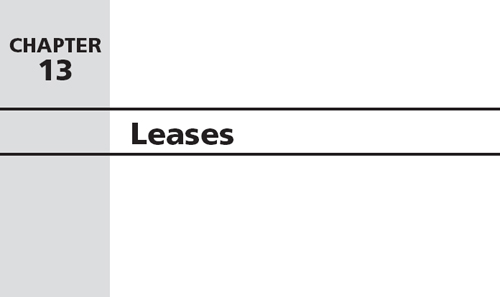
Businesses generally acquire property rights in long-term assets through purchases that are funded by internal sources or by externally borrowed funds. The accounting issues associated with the purchase of long-term assets were discussed in Chapter 9. Leasing is an alternative means of acquiring long-term assets to be used by firms. Leases that are not in-substance purchases provide for the right to use property by lessees, in contrast to purchases that transfer property rights to the user of the long-term asset. Lease terms generally obligate lessees to make a series of payments over a future period; thus, they are similar to long-term debt. However, if a lease is structured in a certain way, it enables the lessee to engage in off–balance sheet financing because certain leases are not reported as long-term debt on the balance sheet. Business managers often wish to use off–balance sheet financing to improve the financial position of their companies. However, as noted earlier in the text, efficient market research suggests that off–balance sheet debt is incorporated into user decision models in determining the value of a company.
Leasing has become a popular method of acquiring property, because it has the following advantages:
- It offers 100 percent financing.
- It offers protection against obsolescence.
- It is often less costly than other forms of financing the cost of the acquisition ...
Get Financial Accounting Theory and Analysis: Text and Cases, 11th Edition now with the O’Reilly learning platform.
O’Reilly members experience books, live events, courses curated by job role, and more from O’Reilly and nearly 200 top publishers.

